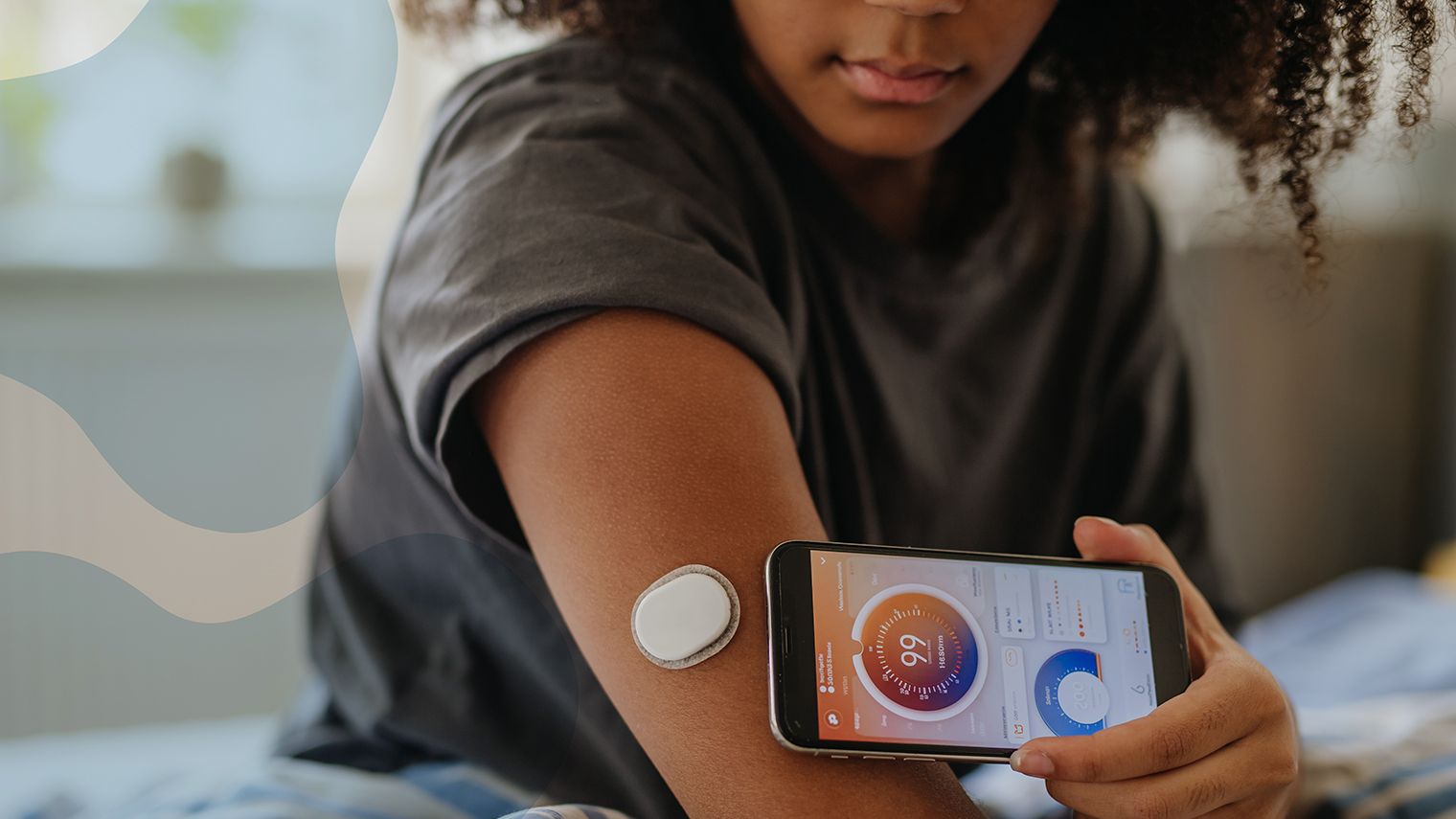How a CGM Helped Me Spot Trends in My Diabetes Care
June 06, 2024
Content created for the Bezzy community and sponsored by our partners. Learn More

Photography by Halfpoint Images/Getty Images
Switching to a continuous glucose monitor (CGM) didn’t come easy. After 15 years, I wanted to try something new.
When I was first diagnosed with type 2 diabetes over 20 years ago, one of the biggest challenges I faced was testing my blood glucose levels. All of my family members have some form of diabetes, so I’ve seen them perform the process many times.
I didn’t like the process of sticking my finger and squeezing it to get a tiny amount of blood to smear on a test strip. I worked a lot with my hands at the time, and constantly having minor wounds on my fingers wasn’t something I enjoyed. Plus, it was painful.
I’m unsure if my fingers are extra sensitive or if I hit a nerve every time, but testing my levels three or four times a day with finger sticks wasn’t something I wanted to do any longer. Unfortunately, this caused me to check my levels less frequently, and my A1C rose before a medical professional suggested I use alternate site testing.
For the last 15 years, I’ve tested my blood glucose levels by sticking myself on my forearms for a small blood sample. It’s generally painless and usually gives me enough blood for a good sample.
However, as I’ve aged, I bruise more easily, and my forearms now show wear from years of needlesticks. I wanted to try something new.


Why I thought a CGM wasn’t for me
I thought a CGM wasn’t suitable for me because I didn’t like the idea of being attached to a machine.
Early in my diagnosis, one of the tests my doctor prescribed for me was to be hooked up to a portable machine that checked my blood glucose levels every 5 minutes for 3 days. I hated it.
I don’t accept change quickly, so deciding to switch to a CGM hasn’t come easily.
I had to carry it around, and where it was attached to my abdomen made it difficult for me to use the restroom because I was afraid I would pull it out when adjusting my clothes.
Plus, I thought you still had to do finger sticks multiple times daily to calibrate the system, which didn’t make sense. But I was wrong.
Why I changed my mind about a CGM
I don’t accept change quickly, so deciding to switch to a CGM hasn’t come easily. I like routine, especially when it comes to my diabetes management. There are so many things to keep track of, so introducing something new requires patience, or I can become overwhelmed.
Here are a few reasons I finally made the switch.
- My A1C was higher than expected: Even though I tested my blood glucose regularly, my A1C was higher than it should’ve been. My doctor said a CGM could identify peaks that I might not find when checking at the same time every day.
- Tired of needlesticks: I wanted to give my forearms a break.
- Constantly guessing what my blood sugar was: My doctor always asks the same question: “What have your levels been running?” I never accurately knew the answer.
What I’ve learned after 6 months with a CGM
It’s been 6 months since I started using a CGM, and I’m so glad I made the switch. One of the most surprising things I learned when researching the specific brand I wanted to use was that most don’t require finger sticks to calibrate the system.
However, it’s still a good idea to have access to a blood glucose monitor if the readings don’t match how you feel. Here’s what I’ve learned about my blood glucose levels since switching to a CGM:
- The dawn phenomenon: I’d heard of the dawn phenomenon, which means your blood sugar rises naturally in the body as it prepares to wake up. But I didn’t think it happened to me. It usually occurs around 10 a.m.
- My morning coffee does more than jolt my system: Most mornings, when I’m home, I drink 2 cups of coffee, usually before I eat my breakfast. During this time, my blood glucose typically rises 100 points. It could be the dawn phenomenon, but when I’m on the road and not drinking coffee, my levels still rise, just not as high as when I’m having coffee.
- Before dinner lows: I was having lows before dinner and determined I was giving myself too much insulin with my lunch.
Takeaway
If you’ve been on the fence about switching to a CGM for one of the reasons I mentioned above or perhaps have one of your own, I hope you’ll reconsider. I chose to use a Dexcom 7, and I’ve traded 30 needlesticks (three times daily) to just two over a 10-day period. I insert the Dexcom 7 and then calibrate the first readings with a finger stick.
I also like that it has an alert system that allows me to personalize it to my preferences. It has an audible alert that notifies me when my blood glucose levels are approaching 70, and I need to take action to prevent it from going lower.
Plus, if I don’t feel right, I can look at my phone, and it will tell me what my numbers are. No more needlesticks and no more looking for my glucose monitor, which is especially helpful during the night when I’m having a low.
I’m glad I finally switched to a CGM. It was a big change for me, but it’s really helping me monitor my blood glucose levels better so I can continue to do other things.
Medically reviewed on June 06, 2024


Like the story? React, bookmark, or share below:
Have thoughts or suggestions about this article? Email us at article-feedback@bezzy.com.
About the author